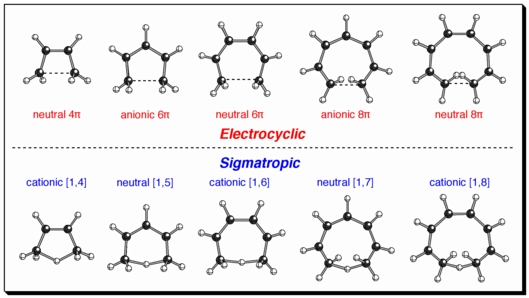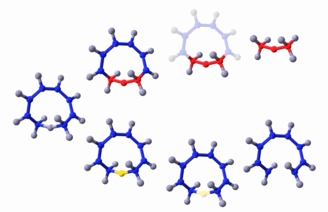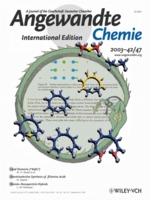
The principal of orbital symmetry conservation implies that the topology of the carbon backbones in transition structures for different types of pericyclic reactions will be similar. But it does not say how similar. We have shown that electrocyclic and sigmatropic rearrangements with the same electron count have transition state geometries that are strikingly similar, in fact almost indistinguishable (see above) but for the presence or absence of a simple proton (in yellow, below, in the cationic [1,8]-shift/neutral 8-pi cyclization example). These observations have also led to the concept of "transition state proton affinities", a measure of the basicity of partially formed or broken bonds in pericyclic transition structures. In addition, transition structures for sigmatropic reactions also have substructures that resemble 3-center 2-electron cations (in red, below).

Hoffmann, R.; Tantillo, D. J. Angew. Chem. Int. Ed. 2003, 42, 5877-5882: "Breaking Down Barriers: The Liaison Between Sigmatropic Shifts, Electrocyclic Reactions and 3-Center Cations"
Ponec, R.; Bultinck, P.; Van Damme, S.; Carbo, R.; Tantillo, D. J. Theor. Chem. Acc. 2005, 113, 205-211: "Geometric and Electronic Similarities between Transition Structures for Electrocyclizations and Sigmatropic Hydrogen Shifts"
